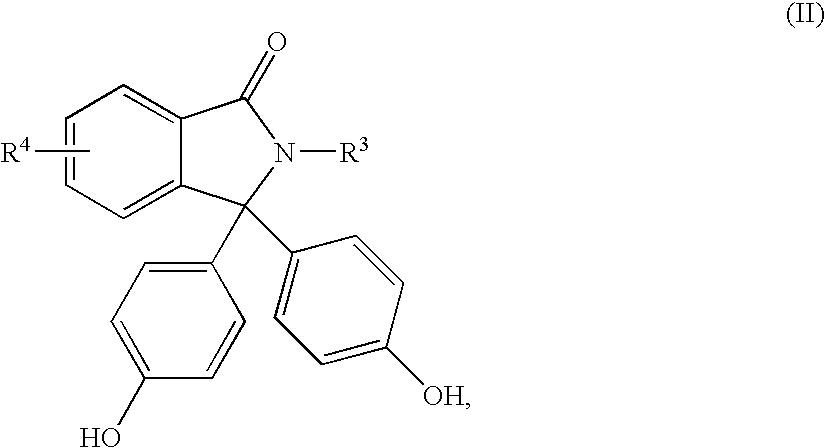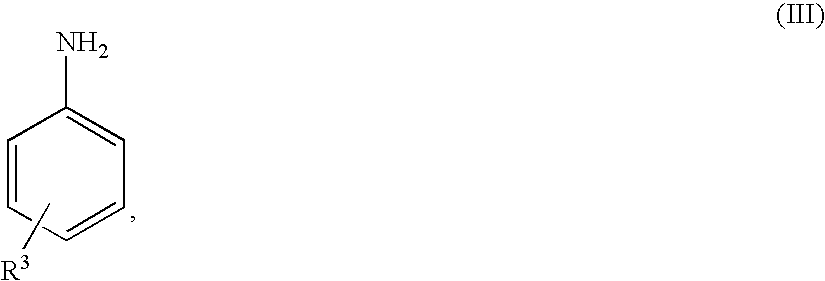Polyester-polycarbonate blends
a polycarbonate and polymer technology, applied in the field of polymer compositions, can solve the problems of poor processability, poor heat, chemical and stress crack resistance, poor resistance to gamma radiation sterilization,
- Summary
- Abstract
- Description
- Claims
- Application Information
AI Technical Summary
Benefits of technology
Problems solved by technology
Method used
Image
Examples
examples
Materials
[0113]Table 1 provides the details of the materials and the source from where they were procured.
TABLE 1ComponentDescriptionSourcePCPolycarbonate resin (Mw = 30,000 g / mol, PC standards)GE PlasticsITR20Poly(20 wt % isophthalate-terephthalate-resorcinol ester)-co-GE Plastics(80 wt % bisphenol-A carbonate) copolymer (Mw = 30,000g / mol, PC standards)ITR90Poly(90 w % isophthalate-terephthalate-resorcinol)-co-GE Plastics(10 wt % bisphenol-A carbonate) copolymer (Mw = 25,000g / mol, PC standards)36PPPPoly(36 weight % 3,3-Bis-(4-hydroxyphenyl)-2-phenyl-2,3-GE Plasticsdihydroisoindol-1-one)-co-(64 weight % bisphenol-Acarbonate) copolymer (Mw = 30,000 g / mol, PC standards)48PPPPoly(48 weight % 3,3-Bis-(4-hydroxyphenyl)-2-phenyl-2,3-GE Plasticsdihydroisoindol-1-one)-co-(52 weight % bisphenol-Acarbonate) copolymer (Mw = 30,000 g / mol, PC standards)55PPPPoly(55 weight % 3,3-Bis-(4-hydroxyphenyl)-2-phenyl-2,3-GE Plasticsdihydroisoindol-1-one)-co-(45 weight % bisphenol-Acarbonate) copolymer (M...
examples 1-3
[0115]In the Examples Ex.1 to Ex.3 the polyester employed was polycyclohexylidene cyclohexanedicarboxylate also known as PCCD. The type of copolycarbonate employed was varied. In the case of Ex.1 the copolycarbonate employed comprises poly (36 weight % 3,3-Bis-(4-hydroxyphenyl)-2-phenyl-2,3-dihydroisoindol-1-one)-co-(64 weight % bisphenol-A carbonate) copolymer. However, in Ex.2 and Ex.3 the copolycarbonate was poly(48 weight % 3,3-Bis-(4-hydroxyphenyl)-2-phenyl-2,3-dihydroisoindol-1-one)-co-(52 weight % bisphenol-A carbonate) copolymer and poly(52 weight % 3,3-Bis-(4-hydroxyphenyl)-2-phenyl-2,3-dihydroisoindol-1-one)-co-(48 weight % bisphenol-A carbonate) copolymer respectively. The synthetic procedure followed to prepare the blend was identical to the general procedure described above. However, the amount of polyester was 25 weight percent and the copolycarbonate was 75 weight percent in the blends of Ex.1 to Ex.3.
examples 4-6
[0118]In the Examples Ex.4 to Ex.6 the composition was made using the general process described above. The amount of the copolycarbonate was varied. The polyester employed was PCCD and the copolycarbonate used was 36PPP. The amount of 36PPP was 80 weight percent in Example 4, 20 weight percent in Example 5 and 53 weight percent in Example 6. The amount of PCCD in the composition of Examples 4-6 was 20 weight percent, 80 weight percent and 47 weight percent respectively.
PUM
| Property | Measurement | Unit |
|---|---|---|
| Fraction | aaaaa | aaaaa |
| Fraction | aaaaa | aaaaa |
| Percent by mass | aaaaa | aaaaa |
Abstract
Description
Claims
Application Information
 Login to View More
Login to View More - R&D
- Intellectual Property
- Life Sciences
- Materials
- Tech Scout
- Unparalleled Data Quality
- Higher Quality Content
- 60% Fewer Hallucinations
Browse by: Latest US Patents, China's latest patents, Technical Efficacy Thesaurus, Application Domain, Technology Topic, Popular Technical Reports.
© 2025 PatSnap. All rights reserved.Legal|Privacy policy|Modern Slavery Act Transparency Statement|Sitemap|About US| Contact US: help@patsnap.com



